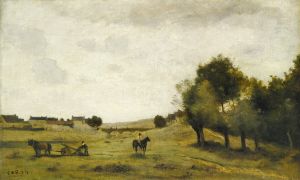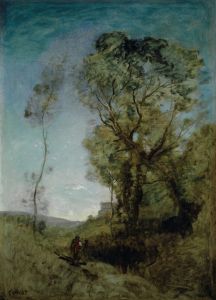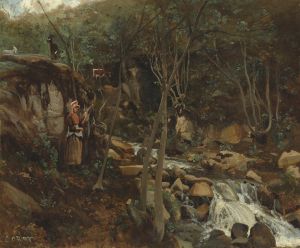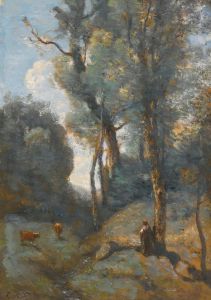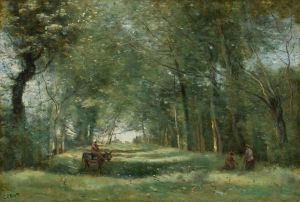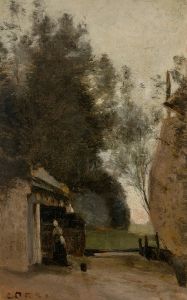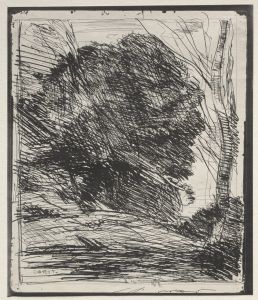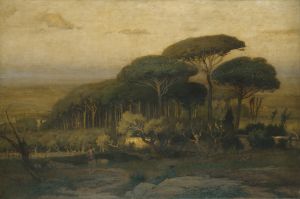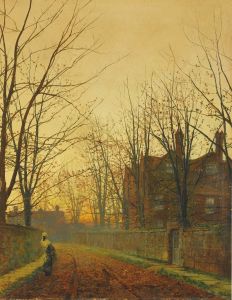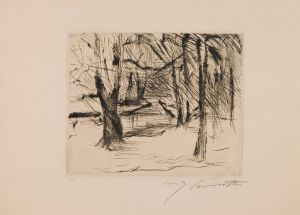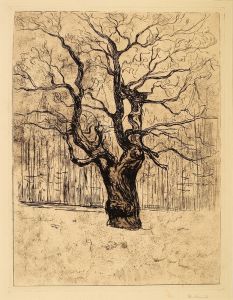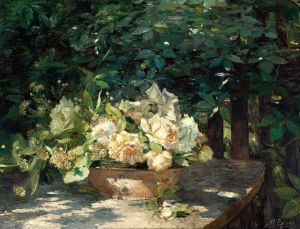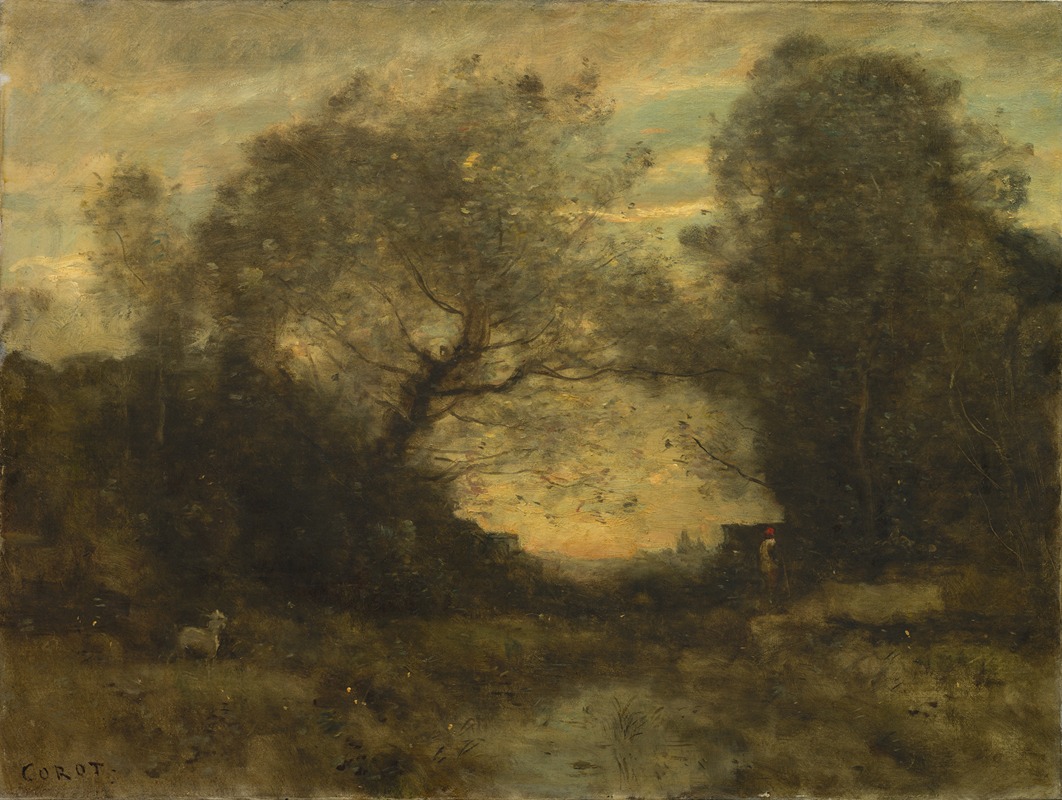
The Pond at the Entrance of the Woods
A hand-painted replica of Jean-Baptiste-Camille Corot’s masterpiece The Pond at the Entrance of the Woods, meticulously crafted by professional artists to capture the true essence of the original. Each piece is created with museum-quality canvas and rare mineral pigments, carefully painted by experienced artists with delicate brushstrokes and rich, layered colors to perfectly recreate the texture of the original artwork. Unlike machine-printed reproductions, this hand-painted version brings the painting to life, infused with the artist’s emotions and skill in every stroke. Whether for personal collection or home decoration, it instantly elevates the artistic atmosphere of any space.
Jean-Baptiste-Camille Corot was a pivotal figure in landscape painting and a leading artist of the Barbizon School, which was instrumental in the development of the Impressionist movement. One of his notable works, "The Pond at the Entrance of the Woods," exemplifies his mastery in capturing the serene beauty of nature through his distinctive style.
Corot was born in Paris in 1796 and began his artistic career relatively late, at the age of 26. He was known for his plein air painting, a method of painting outdoors to capture the natural light and atmosphere of the landscape. This approach allowed him to develop a keen sensitivity to the subtleties of light and shadow, which became a hallmark of his work.
"The Pond at the Entrance of the Woods" is a quintessential example of Corot's ability to blend realism with a poetic sensibility. The painting depicts a tranquil scene where a pond is nestled at the edge of a forest. The composition is balanced and harmonious, with the pond reflecting the surrounding trees and sky, creating a mirror-like effect that enhances the sense of calmness and introspection.
Corot's use of color in this painting is particularly noteworthy. He employed a muted palette, dominated by soft greens, browns, and grays, which imbue the scene with a gentle, dreamlike quality. This restrained use of color is characteristic of Corot's work and contributes to the overall mood of serenity and timelessness.
The brushwork in "The Pond at the Entrance of the Woods" is delicate and precise, yet it retains a certain fluidity that suggests movement and life within the landscape. Corot often used a technique known as sfumato, which involves the subtle blending of colors and tones to create a soft, hazy effect. This technique is evident in the way the trees and foliage are rendered, with edges that seem to dissolve into the atmosphere, enhancing the painting's ethereal quality.
Corot's landscapes often convey a sense of solitude and contemplation, and "The Pond at the Entrance of the Woods" is no exception. The absence of human figures in the painting invites viewers to immerse themselves in the natural world and reflect on its beauty and tranquility. This focus on nature as a source of solace and inspiration was a central theme in Corot's work and resonated with the broader Romantic movement of the 19th century.
Throughout his career, Corot's work was celebrated for its lyrical quality and its ability to capture the essence of the natural world. He was highly regarded by his contemporaries and influenced a generation of artists, including the Impressionists, who admired his innovative approach to landscape painting.
"The Pond at the Entrance of the Woods" remains a testament to Corot's skill and vision as an artist. It continues to be appreciated for its ability to evoke a sense of peace and connection with nature, qualities that have ensured its enduring appeal and significance in the history of art.





